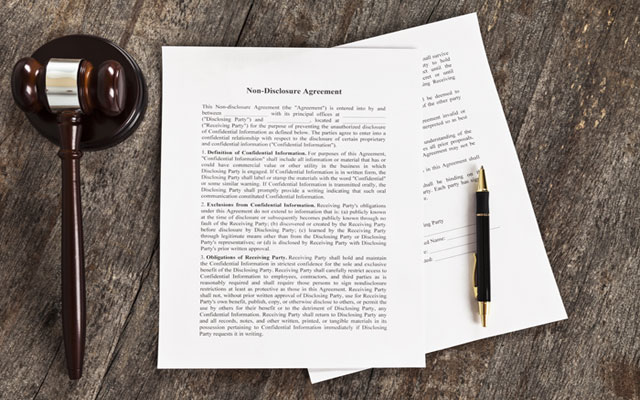Introduction
The Two Major Parts of Estate Planning
Financial Planning
This part of the estate planning process involves anything to do with finances. What do you have now? What do you need? Do you have enough assets to take care of dependents after your death? Thus, most experts recommend that the first step in financial estate planning is to list all of your assets. Listing your assets allows you to see where you are now, where you need to go in the future and where the holes in your financial plan are. Be sure to deduct final expenses from your total assets to get an accurate picture of what you will have left for your heirs. Once you have a clear idea of where you stand financially you can then set goals and begin the planning process to fill in gaps.
You may want to take out additional life insurance, increase the premium on a current policy, add investments such as CD's, stocks and money market funds or increase the amount you are saving each month from your salary. Be sure to take into consideration the effects of inflation on the assets you will be leaving for your family.
The last component of financial planning are estate taxes. There are numerous ways to avoid paying excessive estate taxes, however, these options need to be discussed with a financial advisor.
Directives and Distribution
This part of estate planning is sometimes referred to as the "administrative" component as it concerns itself with actions such as distributing funds, verifying wills, executing last wishes and following directives. Some estate planners and advisors include the actual drawing of wills, powers of attorney, health care directives and other paper work in this category. Distribution of the assets is certainly included in this area. Asset distribution can occur before or after death and can be turned over via a last will, through joint ownership of assets, through gifts of assets or through the use of trusts. The particulars of the last three distribution methods are more complicated and should be set up by an attorney, a financial planner or an estate planner.
The Three Sub-Parts or Categories of Estate Planning:
Last Will and Testament
You may legally hand write a will yourself and as long as no other wills exist with your signature on it, it would be considered valid. This is known as a holographic will. Usually reserved for last minute wills in emergencies or for soldiers, these wills are perfectly legal and binding. One of the shortest wills on record simply said, "All to wife" and was written by a Canadian farmer in 1948 after he had become trapped under his tractor. He carved these last words on the fender of the tractor and it was considered legally binding. If you have few or no assets, then a handwritten will should serve your purposes. If, however, you have any assets, whether property, cash, bank accounts, insurance polices, or valuable belongings, you should spend the extra fee to an attorney to draw a "legal" will. This document can still be contested, however, it is rare that contestations are honored if the will is clear, legal, signed and witnessed. Holographic wills may not enjoy the same consideration because it is not signed before witnesses, thus those who would contest it could do so on the grounds that no one knows for sure if the will was made by you or the beneficiaries you name therein.
Healthcare Power of Attorney
As discussed previously, health care power of attorneys are charged with making medical decisions for you in the event you are unable to do so yourself. As with property power of attorneys, there are non-durable, durable and springer forms. You can write a health care power of attorney yourself or have it drawn by an attorney. Often they are prepared along with a living will so that the person you charge with power of health care attorney can prove that they are carrying out your wishes as laid out in your living will. As with financial powers of attorneys you may want to select your agent before an emergency situation arises. Many people decide to choose an agent for healthcare when they know they will be going to war, into surgery or overseas.
Conclusion
Introduction
The tax laws in America change often. In order to pay the least amount of taxes it is vital to stay current on what laws apply to you and which do not. Many people use an attorney or certified public accountant for these complicated matters. Using a professional for estate tax advice is suggested if you have a large estate or if you find this topic difficult to understand. Using a professional could save you thousands of dollars. Whether you decide to use a law 2006 yer or CPA or not, you can educate yourself on current tax laws and use this lesson to get a good basic understanding of how to save yourself unnecessary estate taxes.
Estate Tax Laws from 2013
The Bypass Trust:
The bypass trust is ideal for married couples with assets in excess of $2 million who intend on leaving the bulk of their estate to their children. Bypass trusts can be set up for each married partner, so be sure to have one for both of you. By doing so you can each take the $5 million federal estate tax exemption which will allow you both to leave a total of $10 million to your children tax free. Remember, this is taking current tax laws into consideration. The amount you can leave tax free will change after 2013 and thus will have to be adjusted according to the laws.
Even though you can leave all of your assets to your spouse without paying estate taxes you should still set up a bypass trust for your children. If you do not, the money left to the surviving spouse will be subject to taxes of 40 cents on the dollar for anything above the cap set by the federal government.
Another nice benefit of this trust is that the surviving spouse can access the money in the trust to pay reasonable living expenses. A bypass trust must be set up by an attorney.
The QTip Trust:
This trust is perfect for those who are in a second marriage and have children from a first marriage. It is also beneficial to couples who plan on leaving the bulk of their estate to their children. This trust is often set up along with a bypass trust because they work well together and can save thousands on taxes if paired correctly. The trust is set up for your kids but they do not have to pay taxes on it until your spouse dies. Any money generated by the trust must go to the surviving spouse.
The QTip works like this: First your attorney would set up a bypass trust for the maximum amount allowed tax free. The remainder of your estate can then be left to your spouse, which is tax exempt, while naming your children as the ultimate beneficiaries. Your spouse will be able to use any income made from the QTip, but the money itself will go to your children after he or she dies rather than to whom they may designate. Further, if your spouse remains under the current tax exemption, your children will avoid paying taxes on the inheritance in addition to that in the bypass trust.
A QTip must be set-up by an attorney and again, is usually paired with a bypass trust. The money in a QTip trust will not go to your children until your spouse dies.
Gifting and Gift Tax
Gifting your estate while you are alive can save you a bundle on taxes later. This method allows your heirs to thank you in person for your generosity and gives you the opportunity to see them enjoy the benefits of their inheritance. This is an excellent option for anyone who has heirs. Currently there is a $14,000 annual gift tax exemption in effect. Thus, you can give up to $14,000 to one person per year without imposing a gift tax from the government. You can gift this amount to as many people you like per year. Many people use this exemption to reduce the total of their taxable estate, thus avoiding giving nearly half of their money to Uncle Sam after they die.
If used for several consecutive years this can be an excellent estate tax reduction strategy, particularly considering that for a married couple each spouse can give up to $14 thousand each for a total of $28,000.00 per year per person!
Additionally, any money spent directly for another's college tuition is tax exempt under the gift tax law as is any money directly spent for another's medical costs.
Conclusion


































